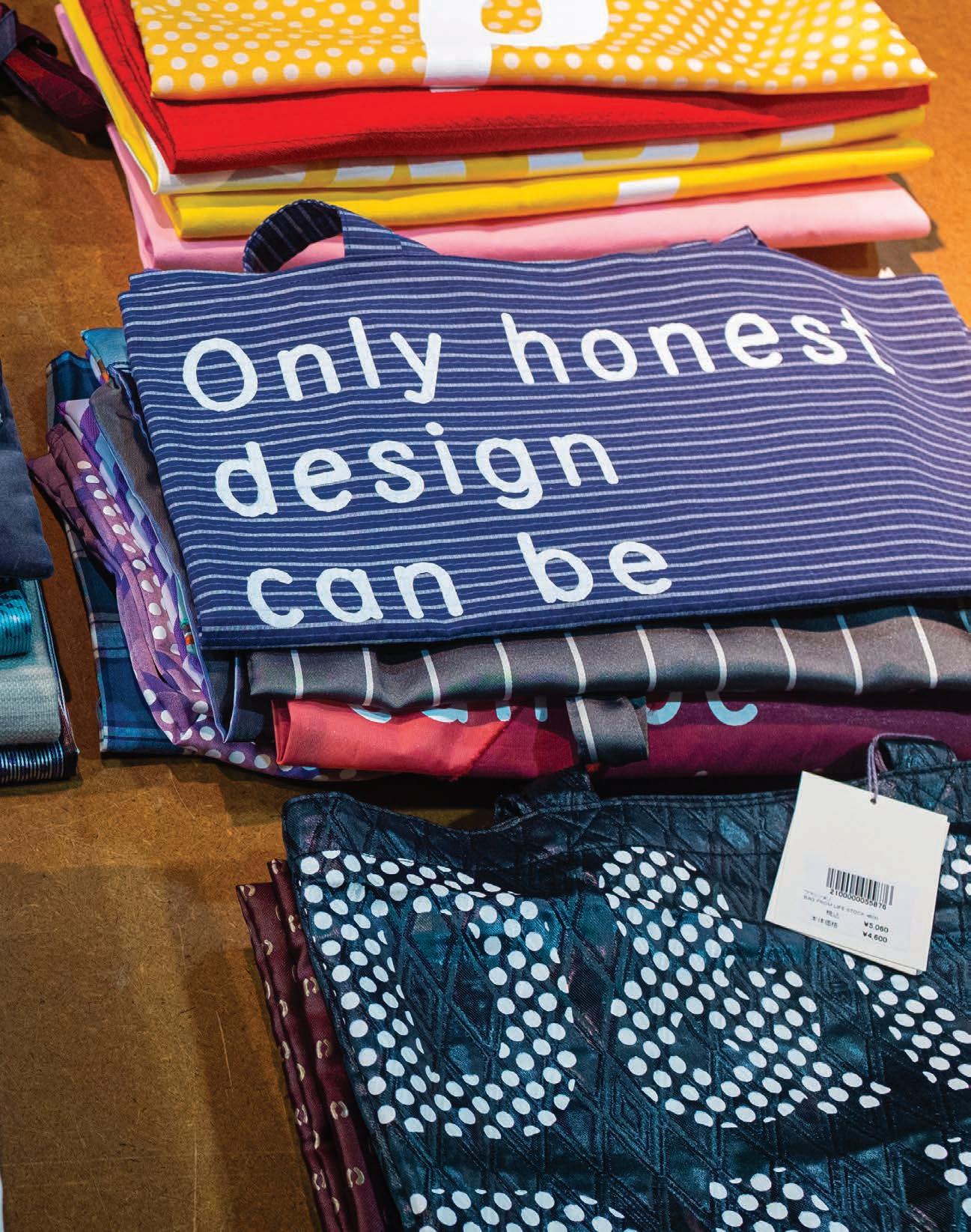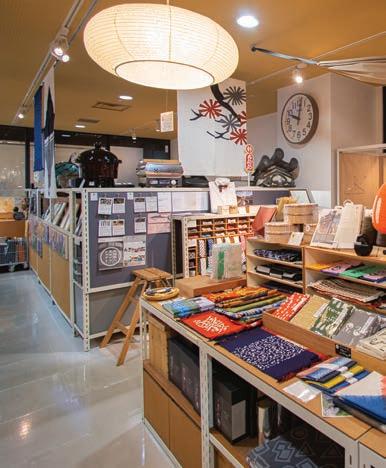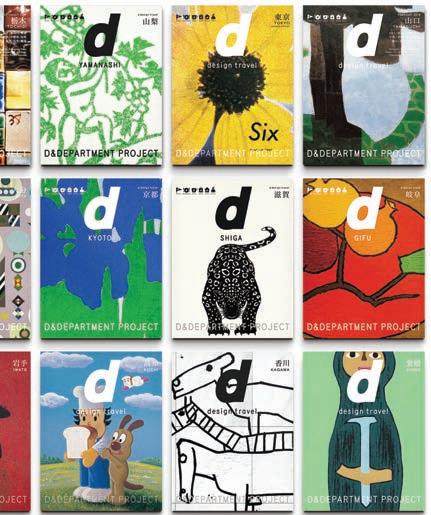
13 minute read
MARKET REPORT Exploring
PROPERTY interview with Mori Nishimura, Sales Division, Housing Japan
Tokyo Market Report, 2020
Advertisement
Tokyo’s property market in 2020 would have been very bullish had the Olympics been held, but the Covid-19 pandemic has upended that scenario. The unfortunate delay of the Olympics has been overshadowed by the complete shutdown of inbound tourism and a state of emergency in April and May. The resultant economic impact is only starting to play out.
Although it is still very early to predict the longterm impact of the virus, it is likely that buyers will find residential and commercial acquisition opportunities. So far, sectors have been affected variously. The hotel sector has seen an immediate negative impact from the collapse in demand, and we will likely see non-performing assets come on to the market as early as summer 2020. Investors should use this opportunity to acquire prime assets or assets at significantly reduced prices.
Alfie Goodrich (AG): Nishimura-san, setting Covid-19 aside, could you describe some of the major trends we have seen in the Tokyo residential market recently?
Nishimura Mori (NM): Since Tokyo won its bid to host the 2020 Olympics, prices for new apartments and condominiums have been rising. Together with the government’s easing of monetary policy and consistently low interest rates, this has created a prosperous marketplace in Tokyo, especially.
Over the past couple of years, we’ve seen shortages of construction materials and labour because of events like the 2019 Rugby World Cup and the Olympics. Both shortages have caused construction costs to rise. Competition for land is also quite fierce. According to the chika koji (Commercial Government Assessed Land Values) price report, land prices are currently rising at levels not seen for almost 25 years, although this applies more to the commercial sector than the residential one.
Developers have been scrambling to find land, building but not selling aggressively, meaning they have plenty of stock but are trying to avoid an oversupply of units. One reason is the high price of new apartments at the moment.
Sales of new apartments are slowly decreasing, and buyers are flowing to the second-hand market. For the first time, the market has more second-hand properties than new. Yet developers aren’t in a rush. They believe the price of land and the price of construction aren’t going to decrease anytime soon, so they continue to acquire land and build on it. Sumitomo Realty & Development, in particular, have a very large apartment stock in Tokyo but aren’t particularly in a rush to sell.
Another trend is that major developers such as Sumitomo, Mitsui, Mitsubishi, Daiwa and those based abroad, notably Pembroke & Grosvenor, are entering the “refurbish and sell” market. I have had many acquisition specialists tell me they are having an extremely difficult time acquiring developable land, and they don’t know what to do. In other words, the developers’ margin for new build development has diminished. They are turning to refurbishing. Though once not a business for them, it is now something they are going to have to learn to do.
AG: What are the most significant investments from overseas in Japan’s residential property sector right now?
NM: We’ve just had an announcement by Blackstone which is very significant. They have paid a record price—around $2.7bn—to buy back a
Hikawa Gardens Akasaka, developed by PEMBROKE
multifamily portfolio of property which they sold to Anbang in 2017. Most of the folio consists of multi-storey residential blocks across Tokyo and Osaka. Over the past two years we’ve seen Blackstone deploying capital from their $7.1bn Asia Real Estate Fund II. Their buyback of the Anbang folio is significant for the Japan market.
Blackstone is certainly one to watch in both residential and commercial property. Another would be Starwood, which has a very mixed and balanced portfolio, with a lot of residential property and hotels. Starwood is definitely a company to watch, as they recently re-opened their Tokyo office—in December 2019—after closing it in the early 2010s.
AG: How is the commercial property sector affecting the residential property sector?
NM: Well, the two sectors have traditionally been connected. More offices mean more workers, and they all need somewhere to live. It will be interesting to see how Covid-19 impacts the office market.
Many staff and firms have now experienced working from home and, even after the crisis, it is likely that more people and businesses will opt for the work-from-home model. This could have a negative impact on office demand. It is hard to know yet how big that impact might be.
Another potential negative influence on office demand is the co-working business model. It is industry knowledge that the marginal demand for office space over the past couple of years is the result of the rapid expansion of WeWork and other co-working space providers. This model is under pressure now because of Covid-19 and the financial health of WeWork. The expected drop in demand is likely to be a drag on the office market in the medium term. AG: Tell us a little about the rise of the second-hand property sector.
NM: Japan has traditionally operated a “scrap and build” approach to development. This has nothing to do with the quality of buildings, as well-built wooden homes in Japan can last for 100 years. It has more to do with the real estate laws in Japan that have kept the scrap and build tradition going.
In Japan, the seller is generally liable for any “hidden” defects found after selling the house. Even if there is a clause stating that the seller is liable for defects, the seller may not have the funds for repair as they generally have used up their savings in purchasing their next home. Therefore, when considering a second-hand home, the buyer is left without any suitable “insurance.” This situation scares people away from the second-hand market.
Understandably, the process is also stressful for the seller. Therefore, it is common for people to simply tear down the home and sell the land (in the case of single-family homes).
However, with a growing number of vacant homes and scarce land in CBD areas, in particular central Tokyo, the second-hand market is now required to be more attractive in order to solve these issues. To aid this, the government has been moving swiftly to create a more liquid, transparent and less hassle-free second-hand market and a system of home inspections.
From April 2018, brokers handling sales of homes have been obliged to ask the seller and buyer whether either will conduct inspections (building condition surveys) of deterioration, such as cracks and leaks of the exterior. Obviously, this won’t change singlehandedly the second-hand market, but it is a small step in the right direction.

Hikawa Gardens Akasaka, developed by PEMBROKE
AG: How else is central government helping the housing market, particularly in the area of used and refurbished housing?
NM: The Ministry of Land, Infrastructure, Transport and Tourism is planning to give public IDs to second-hand homes sometime this year and start a system to record information such as transaction prices. It can be difficult to track past transaction prices of real estate in the current market as not all transactions are obliged to be recorded.
We’re also seeing the emergence of lower interest rates for refurbished properties. If a property meets certain requirements, such as being earthquake resistant or barrier-free or having improved insulation, purchasers will be able to obtain loans (Flat 35 Loans) at low interest rates.
Given how the increasing number of vacant houses has become a problem for cities, the government will provide policy support to make it easier for existing homes to be traded. Flat 35 Loans are mortgages with fixed interest rates for up to 35 years.
Most conventional bank loans only have fixed interest rates for the first 10 years, after which they become variable. These new type of loans and new approach to refurbished housing from government are two very significant recent developments.
AG: Is the increased focus on refurbishing older properties confined to the everyday buyer or are development companies looking to add this sort of stock to their portfolios?
NM: Luxury residential developers are also moving towards the second-hand trend. Not only is it becoming more the norm for private buyers to purchase second-hand homes, developers are doing so, too. They’ve been having a difficult time finding land, and it can be an extremely convoluted and lengthy process to tear down older buildings as 80% of residents must agree on the demolition.
A good example of a recent and successful refurbishment project in central Tokyo is Hikawa Gardens, Akasaka, by Pembroke. Pembroke acquired the land and developed an apartment building in the early 2000s. After more than a decade of highly successful operation as a rental, Pembroke strategically removed the tenants, freeing it up for refurbishment.
The building was successfully and creatively refurbished as for-sale apartments, and sales have been brisk. The Tokyu Land Corporation is also seeing success with redevelopment projects, particularly their recent project Majes Tower Roppongi, which was also previously a rental-only apartment. The premium units on the top three floors (25–27F) have sold for ¥8-9m per tsubo (approximately 3.3 square metres).
For more property market information, property listings and real estate market news, visit our website at:
housingjapan.com
LIFESTYLE D&Department Project
LONG-LIFE DESIGN Interview with founder of D&Department Project, Kenmei Nagaoka
Photos: Alfie Goodrich & D&Dept.

Founder, Kenmei Nagaoka
D&Department Project’s manifesto lists 10 criteria of “long-life design,” designs that can be used for a long time. At the entrance of their store in Kyoto, you’ll find a sign listing five of them:
Know: We know the maker. Use: We use the product. Buyback: We can buy back the product. Longevity: The product is repairable. Continuity: The manufacturer will continue making the product.
For anyone aged 50 and over, these criteria perhaps offer a tantalising glimpse back in time, to the retail world of our youth, a time before “planned obsolescence” and the “throwaway society.”
Long-life design is central to the ethos that drives D&Department. Its mission is to identify and re-evaluate the uniqueness of Japan’s 47 prefectures and their local designs through the sale of goods and food, as well as the promotion of tourism.
Founded in 2000 by designer Kenmei Nagaoka, D&Department Inc.—which operates D&Department Project—has 12 stores in Japan, one in China and one in Korea. It also has a showcase at Japan House Los Angeles. Ultimately, D&Department plans to have a shop in each of Japan’s 47 prefectures.
Of those operating currently, the Toyama and Kyoto outlets are directly managed, while those in Hokkaido, Shizuoka, Saitama, Kagoshima, Okinawa and Yamanashi are franchises. In Tokyo, D&Department has a store in Setagaya Ward, as well as the d47 design museum, the d47 design travel store and the restaurant d47 shokudo in Shibuya’s Hikarie building.
“As a designer myself,” comments Nagaoka, “I’m naturally curious about all design. Much of it I didn’t like. For me, the concept of long-life design, the heart of D&Department’s philosophy, was partly born out of me not wanting to be someone who designs what inevitably gets thrown away or even what is designed from the outset to fail.
“Part of why I started D&Department was to communicate to people that with every design there is a tripartite arrangement between consumer, designer and manufacturer. The age of mass production is over. Our philosophy is designed to positively contribute to the health of society, by identifying good design and long-life design and encouraging everyone to consume these kinds of products, thereby encouraging everyone to waste less.”
The company is striking a balance between valuing good, long-life design and celebrating new design.
“I have to believe my intuition,” says Nagaoka. “After so many years I can see at a glance what makes a great design. Many of the products we are working with have been around for a very long time. Maybe you’ve seen the labels we have on these sorts of products? They show the number of years each product has been manufactured. It helps customers understand the longevity of what they are about to buy.
“Each time we look at something, to decide if it will be in our store or our books, we must look at it with the strict philosophy we have—and that I personally have. Many times, I say no. Perhaps the window for designers is very narrow, but I must trust my feelings.”

The firm’s D-Design Travel arm publishes exquisitely crafted guides, each dedicated to a prefecture of Japan. To date, 26 prefectures have been covered and, with two guides coming out each year, D&Department plans to finish the project in about 10 years. From the sixth volume of the series, the company has received some prefectural government support.

The company’s latest book, dedicated to Ehime Prefecture, was released in April. It follows the same simple but effective template as all previous volumes: introducing the region via sights, restaurants, shops, cafes, hotels and people.
D-Design Travel’s Editor-in-Chief Hideto Shinto elaborates: “For every issue we make, we live in the area for about two months, and gradually realise the ‘feeling’ of that place. The lives of the people you encounter there are rich in individuality. This is natural for the people there, in their area, but in some cases its importance can be neglected.”


Alongside the release of each new magazine, the d47 museum in Shibuya typically has a three-month exhibition of a selection of goods and design. The d47 shokudo also serves food from the featured area in its weekly menus.

The latest exhibition is on Ehime. Shinto continues: “This venue displays tools, daily necessities, handicrafts and some pieces of architecture that are used in Ehime. Most of the exhibits are those encountered by the editorial department during the production of the book, and all of them have history and evolution. The more you know, the more interesting Ehime becomes and the more you understand the long-life design that makes up the place. We hope that you will be able to learn about existing designs unique to Ehime Prefecture through the exhibits and go on to travel through Ehime Prefecture and feel the importance of the individuality of each land.”

“Each book has a kind of standard production cost,” says Nagaoka. “We approach the Prefectural Government, to ask them to contribute. Most do, some don’t. But most times, even if there is no contribution from the government, we go ahead and make the book anyway. With the length of time, effort and organisation that goes into making each book, we make only two each year. Ehime is our 27th book. That leaves us 20 more to make. I may even go back and re-make some of the early ones, as they were bigger. Since about the sixth volume, we’ve made sure to standardise the number of pages, so each prefecture gets the same space, the same attention. Our books are kind of a long-life design as well!”
Learning at Shibuya Hikarie With a diverse showcase of products, food, events, culture and design, D&Department’s presence on the eighth floor of Shibuya Hikarie is worth a visit. It’s easy to while away hours without noticing the time pass. If you’re planning a trip outside Tokyo, the d47 design travel store has four rows of shelves filled with binders badged-up by region, each one full of pamphlets and information (many multilingual) about places to stay, eat and visit. For those wanting to discover more about each region of Japan, and how to make the most of it when you get there, a trip to d47 makes a refreshing adjunct to the kind of online research we’re all now so used to. To sit surrounded by designs, products and food from throughout Japan—whilst researching where best to go in the country to discover and experience more—sums up perfectly the experience and mission of D&D.
The d47 shop, museum and restaurant is located in Shibuya Hikarie. For more information about events, store opening times and to shop online, visit:
www.d-department.com










